You’re in the boardroom, ready to report on CRO performance. But where do you start? What metrics matter most? How can you make data digestible for all stakeholders while managing their expectations?
You’ll find answers to these questions and more as we delve into effective ways of communicating CRO reports in this comprehensive guide. Let’s simplify your next briefing!
Table of Contents
ToggleKey Takeaways
- CRO’s role directly impacts business success
- Key metrics for evaluating CRO performance include conversion rate, bounce rate, traffic source, exit pages, page value, and customer lifetime value
- Developing strategic stakeholder engagement techniques is essential for effectively communicating CRO performance
- Understanding CRO metrics and effectively presenting them to stakeholders is crucial for successful performance communication.
Understanding the Role of CRO in Business Success
It’s crucial to understand that the CRO’s role directly impacts a business’s success. They’re responsible for managing risks and ensuring sustainability. You need to grasp their role in identifying, assessing, and preparing for any dangers that could potentially harm your organization.
Take note of how they analyze the company’s risk profile. They should be developing strategies that not only mitigate these risks but also align with your business goals and objectives. It’s part of their job to ensure that while pursuing growth, you’re not exposed to unnecessary or excessive risk.
Furthermore, watch how they communicate this risk information because it should be done in a way that all stakeholders can easily comprehend. Their effectiveness is often seen in the precision with which they relay complex data into digestible bits of information.
Lastly, observe how well they collaborate with other departments such as finance or operations. A good CRO needs to have an all-rounded perspective on various operational aspects. Thus, their ability to work cross-functionally is key in integrating risk management across the entire business.
Key Metrics for Evaluating CRO Performance
You’ll want to focus on certain key metrics when assessing the effectiveness of your conversion rate optimization (CRO) efforts. The most crucial is, of course, the conversion rate itself. It’s a clear indicator of how well your site or campaign is persuading visitors to take desired actions.
However, don’t overlook other vital metrics. Bounce Rate offers insights into user engagement and satisfaction. A high bounce rate could point towards issues with site design or content relevancy. Similarly, traffic source informs you where your visitors are coming from, helping you identify effective channels and optimize accordingly.
Keep an eye on exit pages too. If users are frequently leaving from specific pages, there may be room for improvement in those areas. Page value can also provide a direct link between individual pages and revenue generation.
Finally, consider customer lifetime value (CLV). This metric reflects the total profit expected from a single customer throughout their relationship with your business.
Communicating CRO Performance to Stakeholders: Essential Steps
You’re on the path to mastering CRO metrics, but understanding these measurements is just part of the equation.
It’s crucial that you also effectively communicate this performance data to stakeholders.
Developing strategic stakeholder engagement techniques will help ensure your message isn’t just heard, but fully understood and acted upon.
Understanding CRO Metrics
We’ll start by getting a deeper understanding of CRO metrics and how they’re used in performance reporting. Conversion Rate Optimization (CRO) metrics are key indicators you use to assess your site’s effectiveness in converting visitors into customers. They’re crucial because they shed light on what’s working and what isn’t, helping you make informed decisions.
Primary CRO metrics include the conversion rate, bounce rate, average time on page, and exit rate. Each offers unique insights into user behavior. For example, a high bounce rate might indicate that users aren’t finding what they’re looking for quickly enough. Understanding these metrics enables you to identify potential roadblocks in your conversion funnel and strategize ways to overcome them.
Effective Performance Communication
Effective communication is essential when it’s time to share your findings and insights, and that’s where a clear, concise approach comes in handy. You must present CRO metrics effectively to stakeholders. It’s not just about giving raw data; you need to analyze and interpret these numbers for them.
Start by identifying key performance indicators (KPIs), then explain their significance. Don’t assume they’ll instantly understand technical jargon or complex graphs. Break down the information into understandable chunks, using metaphors or analogies if necessary.
Stakeholder Engagement Strategies
Having grasped the importance of effective performance communication, it’s critical you also understand stakeholder engagement strategies. You can’t merely report on performance; you have to engage stakeholders actively. This isn’t about spewing numbers or data, but about crafting a story your stakeholders can connect with and believe in. It’s about showing them how their investment is making an impact.
Remember, your stakeholders are diverse with varying interests and concerns. Tailor your communication to address these unique needs. Be transparent, provide regular updates and respond promptly to inquiries or criticisms.
Moreover, invite them into the decision-making process where possible. By doing so, you’ll not only foster trust but also facilitate productive discussions that will drive your company forward.
Utilizing Visuals to Convey CRO Data Effectively
It’s crucial to incorporate visuals when presenting CRO data. They can simplify complex information and aid stakeholder understanding. By using graphs, charts, or infographics, you can illustrate key metrics in a digestible format. Remember, your audience may not be familiar with CRO jargon or have the time to dive into detailed reports. When you use visuals well, you’re not only making your report more accessible; you’re also showing respect for stakeholders’ time.
Consider the types of visuals that will best represent your data. Bar charts are great for comparing different segments, while line graphs effectively show trends over time. A heatmap could highlight areas on your website where users interact most.
However, don’t overload your presentation with graphics just because they look good. Keep it simple and ensure each visual adds value to the story you’re trying to tell. Make sure each chart is easy to interpret at a glance, and remember – clarity should always trump complexity.
In short, visuals aren’t just window dressing – they’re powerful tools that can make your reporting more effective and engaging while helping stakeholders better understand CRO performance.
Managing Stakeholder Expectations in CRO Reporting
In managing stakeholder expectations in CRO reporting, you’re tasked with two crucial responsibilities: setting report standards and handling negative results.
Establishing quality standards for your Conversion Rate Optimization (CRO) reports is a pivotal step to ensure transparency and clarity.
However, it’s equally vital to prepare for those inevitable moments when the results aren’t as positive as expected and navigate them effectively.
Setting CRO Report Standards
You’ll need to establish clear CRO report standards to effectively communicate with your stakeholders. This not only provides transparency but also ensures that everyone’s on the same page. Start by identifying key metrics that are crucial in determining the success of your conversion rate optimization efforts. You could include things like bounce rates, average session duration, and conversion rates.
Next, determine reporting frequency. Monthly reports might work best for you, allowing enough time for strategies to take effect and produce measurable results.
Handling Negative Results
Negative results can be tough to handle, but they’re not the end of the world. In fact, they’re an opportunity for analysis and improvement. You must remember, it’s crucial to communicate these outcomes honestly with stakeholders. They’ll respect transparency over sugar-coated narratives.
Begin by outlining what went wrong and why. Use data-driven insights to support your points and avoid any ambiguity.
Next, focus on solutions: what steps are you taking to rectify the situation? Show that you’ve learned from this setback and have a robust plan in place moving forward.
Never let negative results deter you; instead use them as stepping stones towards progress. After all, CRO isn’t about constant success, but continuous learning and optimization.
Best Practices for Continuous Improvement in CRO Reporting
Regularly reviewing and updating your CRO report’s structure can help ensure continuous improvement. Maintain a keen eye for details that might have been overlooked initially or changes in trend lines. Don’t hesitate to tweak the format if it helps you present data more efficiently.
Pursue metrics that matter. Don’t get lost in vanity metrics; instead, focus on those directly linked to business objectives. If a metric isn’t actionable or doesn’t add value, there’s no point tracking it.
Stay flexible with your goals and KPIs as market trends change, so should your targets. Be ready to adjust them based on industry shifts or internal developments.
Prioritize clarity over complexity. Your report should be easily understood by all stakeholders involved – from marketing specialists to boardroom executives.
Finally, remember consistency is key for accurate comparison over time, but don’t let it hinder progress. Strive for an adaptable yet consistent reporting system that facilitates growth and learning.



